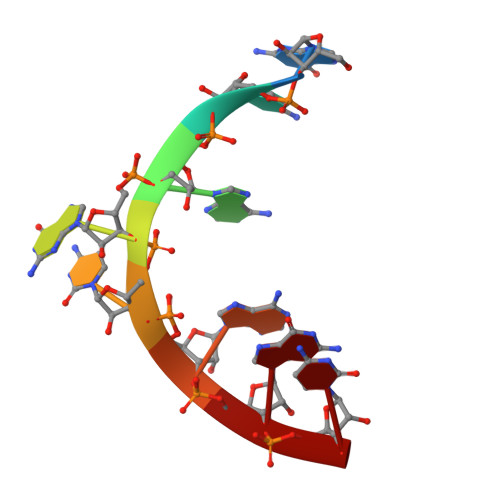Structural insights into synthetic ligands targeting A-A pairs in disease-related CAG RNA repeats.
Mukherjee, S., Blaszczyk, L., Rypniewski, W., Falschlunger, C., Micura, R., Murata, A., Dohno, C., Nakatani, K., Kiliszek, A.(2019) Nucleic Acids Res 47: 10906-10913
- PubMed: 31566242
- DOI: https://doi.org/10.1093/nar/gkz832
- Primary Citation of Related Structures:
6QIQ, 6QIR, 6QIS, 6QIT, 6QIV - PubMed Abstract:
The trinucleotide repeat expansion disorders (TREDs) constitute of a group of >40 hereditary neurodegenerative human diseases associated with abnormal expansion of repeated sequences, such as CAG repeats. The pathogenic factor is a transcribed RNA or protein whose function in the cell is compromised. The disorders are progressive and incurable. Consequently, many ongoing studies are oriented at developing therapies. We have analyzed crystal structures of RNA containing CAG repeats in complex with synthetic cyclic mismatch-binding ligands (CMBLs). The models show well-defined interactions between the molecules in which the CMBLs mimic nucleobases as they form pseudo-canonical base pairs with adenosine residues and engage in extensive stacking interactions with neighboring nucleotides. The binding of ligands is associated with major structural changes of the CAG repeats, which is consistent with results of biochemical studies. The results constitute an early characterization of the first lead compounds in the search for therapy against TREDs. The crystallographic data indicate how the compounds could be further refined in future biomedical studies.
Organizational Affiliation:
Department of Regulatory Bioorganic Chemistry, The Institute of Scientific and Industrial Research, Osaka University 8-1 Mihogaoka, Ibaraki 567-0047, Japan.















